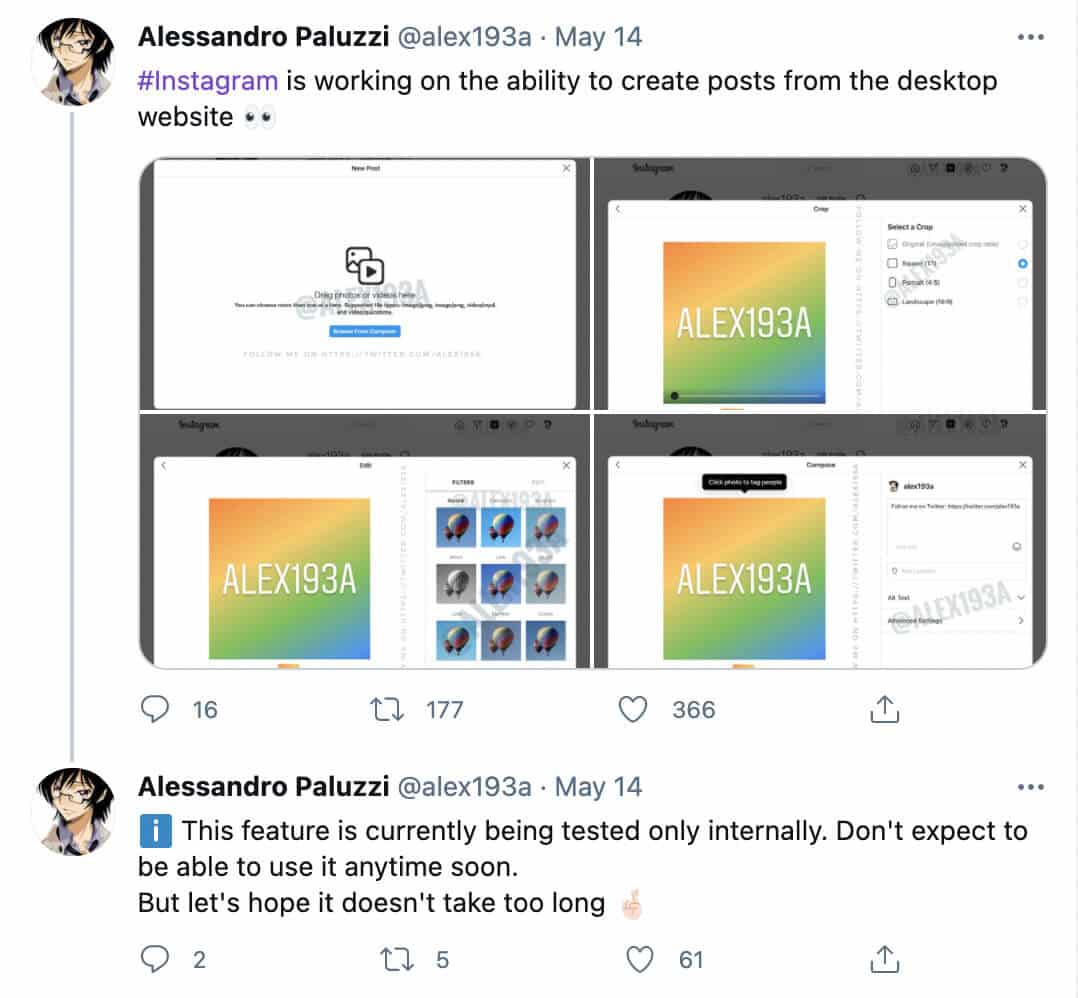Good morning, Marketer, and do you like your new home? I mean MarTech, of course, the new offspring of Marketing Land and MarTech Today. Yesterday was our first day live, and we were off to a flying start. Our first feature on how marketing ops and marketing fit together (see yesterday’s newsletter) was followed up by reporting from Chris Wood suggesting a golden outlook for marketing ops hiring (see below). We also welcomed the Marketoonist aboard, and we continue to cast our eye across a wide range of digital channels, looking at SiriusXM and iHeart jockeying for position in the audio space, and listening to rumors about Instagram opening for browser-based posting. That’s what you should expect from MarTech. Fascination with the inner workings of the marketing and marketing ops space, together with the compulsion to gaze outwards across the ever-broadening horizon of marketing channels, strategies and opportunities. Kim Davis
Editorial Director |
|
| | | Management | | | | | Hiring for marketing operations, marketing support roles set to explode | | Marketing departments forced to do more with less during the 2020 slowdown are about to start hiring like it’s 2019. “What we saw during the pandemic was that, obviously, a lot of jobs got cut, and people were afraid,” said Tim Parkin, President of marketing consulting firm Parkin Consulting. But with major brands about to give their budgets a boost — like Coca-Cola, which plans to bring its spend back up to 2019 levels — agencies need to think about how they can manage this new work. In fact, some agencies have been turning away new business because they don’t have the staff to handle it, he said. “It’s going to be Black Friday levels [of spending] for about five months at the end of the year,” Parkin said. “Consumers have been bottled up forever and companies have been struggling. Companies that invest will be successful, and companies that can’t will fail.” To scale all the marketing programs fueled by this boom in spend, more organizations will be looking to technology solutions as well. But they require professionals who can operate them. When filling marketing operations roles, managers should be hiring for the future of the role, said Justin Sharaf, Vice President Marketing for digital experience platform Jahia Solutions. “Do you hire for role fit or for growth potential? If you want to hire for role fit and hit the ground running, you can do that, but [the hire] will be more niche and more expensive. And that person might not be a long-term fit. I like to hire people, and encourage others to think about hiring, [in terms of] long-term value.” Marketing ops roles, especially, require an accurate assessment of skills and capabilities needed for the job. It’s a mistake to force a marketer into a marketing operation role if they don’t have the specific skills needed. “I’ve seen a talent gap where most companies need marketing ops,” Sharaf said. “They thrust people into marketing ops, those who don’t have the experience. There’s a lot of headaches and lessons learned. Marketing ops has also become so broad. I’ve been in an organization where marketing automation falls within marketing ops, and the same for traditional product [teams] and channel marketing.” Read more here. |
|
| | | Marketoon | | | | | The NFT bandwagon | | | | Today we’re kicking off our weekly syndication of Tom Fishburne’s witty takes on modern marketing by poking fun at one of the shiniest of shiny objects: NFTs. Fishburne’s take. “Before thinking how to create NFTs, it’s important to start with why NFTs would actually matter to our particular brand and our particular customers. Most brands don’t have ‘vast legions of devoted customers’. And ‘internal creativity’ and ‘external interest’ — are rarer commodities than we often think. Most people don’t think about most brands nearly as much as most marketers think they do.” Why we care. Gary Vee might be all-in on NFTs, but you don’t have to be. Fishburne is right that celebrities and iconic brands may find a new revenue stream here, but don’t let that distract you from the primary reason content marketers create: To build value for the brand, service or product that is behind your content. |
|
| | | | Today's Webinar: Create Better Digital Experiences for Your Customers With Headless and Hybrid CMS | | Adopting headless and hybrid Content Management Systems is part of a move toward greater agility in marketing. These solutions give you more flexibility and speed in choosing where content is distributed and how it is displayed. Join a panel of experts moderated by MarTech Today’s editorial director Kim Davis, and learn the trends driving the adoption of headless and hybrid CMSs and the capabilities these systems provide. There's still time to register! » |
|
| | | Attribution | | | | | Why marketing attribution and predictive analytics tools are gaining currency | | While attribution — the practice of assigning weight to every touchpoint in a marketing campaign based upon its contribution to revenues — is not new, the breadth and scope of available marketing attribution tools today are much greater than we could have imagined just a few years ago. Additionally, machine learning and sophisticated algorithms have advanced to enable the synthesis of data of a wide range of types and from myriad sources. Even better, some tools can now glean insights from the data to predict possible future outcomes and suggest next steps. The pressure on marketers to justify their expenditures is stronger than ever, in part because COVID-19 has dramatically impacted all businesses, and also because technology has made it possible to tie spending to revenues in many cases. At the same time, marketers are dealing with an ever-growing number of channels and devices where they can engage with their customers and prospects, and research shows that advertising on multiple channels is more effective. L’Oréal Nordics found that Instagram and Facebook ads, when paired with a TV buy, lifted ad recall by 12 points among its target audience of 18- to 34-year-olds. The social media elements also resulted in 22.6% incremental reach over TV. Additionally, buyers increasingly expect their interactions with brands to be consistent no matter what device they’re using, according to a Salesforce survey of 15,000 consumers and business buyers. They’re also likely to switch from one device to another when they’re researching and making a purchase. Both of these phenomena mean it’s important for brands to coordinate their campaigns across multiple channels, and understand the role each touchpoint plays in moving someone closer to a purchase decision. Why we care. Marketing attribution and predictive analytics tools aim to address all of these marketing challenges by providing accountability across all online and offline channels, often enabling marketers to drive more revenue from the same spend or reduce budget while obtaining the same results. Learn more about marketing attribution and predictive analytics |
|
| | | Performance | | | | | Streaming giants merge sales; iHeart creates ad network | | As audio channels like streaming radio and podcasts continue to mature, two big names are making moves to grow their sales and advertising. New group. Last week, SiriusXM announced a new combined advertising sales organization that includes SiriusXM, Pandora and podcast platform Stitcher. The new group operates under the name SXM Media, and offers a unified connection to 150 million listeners of live radio, streaming music and podcasts. New marketplace. Meanwhile, iHeartMedia last week launched a new programmatic solution, Private Marketplace. Through the podcast publisher’s recently acquired Voxnest, advertisers gain private access and targeting through the iHeartPodcast Network, which boasts over 30 million U.S. monthly unique listeners and 257 million global downloads and streams. Brands will be able to break down audiences by content, geography and consumer psychographics through iHeartMedia’s extensive library. Read more here |
|
| | | Experience | | | | | Rumors we hope are true: Instagram testing support for browser-based posting | | | | Instagram has always been a mobile-based application. Eventually you could look at images on browsers, but you’ve never been able to post from your laptop. It’s caused some issues for social media posting software, too. And, until fairly recently, only a few social applications had figured out how to post without having a manual Instagram posting mechanism. Annoying for social media managers, to say the least. “Developer and leaker Alessandro Paluzzi has discovered Instagram code that strongly suggests the Facebook-owned platform is already working on the ability to upload photos and videos from a desktop web browser,” wrote Tim Hardwick for MacRumors. “Based on images Paluzzi shared on Twitter, browser-based Instagram users could soon be offered the ability to natively drag and drop photos and videos from their computer for upload, as well as crop the content, apply filters, and compose accompanying text for publishing to the social network.” Why we care. Well, first, it’ll just be easier overall to use Instagram when we can manage it from a desktop or laptop device. Next, the implication for when this does finally release is that it could be much easier for social media marketing tools to organize, post, and manage content there. Here’s to hoping the dev rumors are true! |
|
| | | Quote of the day | | | | | | | “Everyone is talking about work from home. No one is talking about the disembodiment of work: The question of whether physical presence is actually needed for someone to do their job well. To me, that’s a more important topic.” Juan Mendoza, Customer Strategist, The Lumery. |
|
|
|





